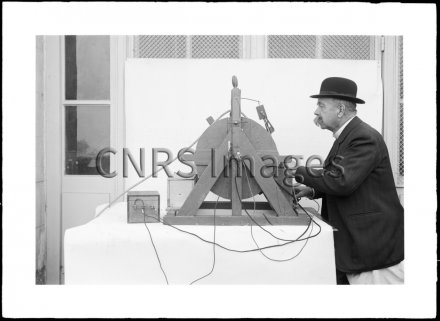Production year
1922

© Fonds historique / CNRS Images
19000001_0328
Thermometer with wire extension photographed on March 17th, 1922. Aided by the Directorate of Inventions, Charles Gorceix created a probe designed to gather thermometric readings when exploring lakes. His probe helped to seek out hot springs on the lakes’ floors, something other probing methods failed to perform. Gorceix’s device was made up of a fine wire wound around a copper mandrel through which water flowed. The temperature was discerned by evaluating the wire’s resistance using the Wheatstone bridge method. To eliminate interference from the cable, three of the bridge’s wires went down to the probe. The data was then read by a galvanoscope, suspended on three shock-absorbing springs. The wire was wound up on a winch, allowing it to descend to 145 meters, a depth equivalent to that of Lake Bourget. The device was described in the DRSII’s official gazette before being presented in a slightly improved, updated version. Office national des recherches scientifiques et industrielles et des inventions.
The use of media visible on the CNRS Images Platform can be granted on request. Any reproduction or representation is forbidden without prior authorization from CNRS Images (except for resources under Creative Commons license).
No modification of an image may be made without the prior consent of CNRS Images.
No use of an image for advertising purposes or distribution to a third party may be made without the prior agreement of CNRS Images.
For more information, please consult our general conditions
1922
Our work is guided by the way scientists question the world around them and we translate their research into images to help people to understand the world better and to awaken their curiosity and wonderment.